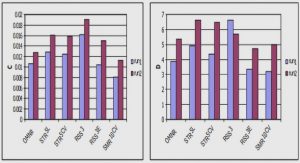Get Complete Project Material File(s) Now! »
Commercial freedom of expression
Commercial freedom of expression primarily relates to the advertising of goods or services for profit.45 Sachs J, in a separate but concurring judgment in Laugh It Off, commented that the fact that expressive activity has a commercial element should not in itself determine whether such expressive activity is protected.46 The Cape High Court in City of Cape Town v Ad Outpost (Pty) Ltd and Others,47 where it was found that advertising constitutes protected expression, echoed the reservations expressed by Sachs J in Laugh It Off.48 An analysis, which focuses on the distinction between commercial and non-commercial expression, is thus rejected in South African law.49 This distinction has its origin in the United States. In the Supreme Court decision of Central Hudson Gas and Electric Corp v Public Service Commission of New York50 it was found that the First Amendment accords a lesser protection to commercial speech than to other constitutionally guaranteed expression.51 The rationale for this distinction relates to the fact that the First Amendment is cast in absolute terms and is not subject to textual limitation, resulting in a clear line being drawn between protected and unprotected speech. Consequently, relatively large classes of speech, such as commercial speech, have been defined as ―non-speech‖ and have received no constitutional protection at all. It was not until the case of Virginia State Board of Pharmacy v Virginia Citizens Consumer Council Inc53 that the United States Supreme Court extended First Amendment protection to pure commercial advertising, which did no more than propose a commercial transaction at a particular price. Since the Virginia State Board decision, the United States courts voided several restrictions on free speech in accepting that First Amendment protection could be extended to advertising.54 Thus, in United Reporting Publishing Corporation v California Highway Patrol,55 it was said, ―[t]he current debate centers not on whether commercial speech is a form of expression entitled to constitutional protection, but on the validity of the distinction between commercial and non-commercial speech‖.56 To the extent that the commercial speech doctrine might be evolving, it appears to be moving in the direction of providing greater – rather than less – protection for commercial speech.
Subordinate position of commercial freedom of expression
In the decision of Northern Central Local Council and South Central Local Council v Roundabout Outdoor (Pty) Ltd and Others73 the Durban and Coast Local Division of the High Court held that advertising as a protected right ―occupies a subordinate position in the scale of constitutional rights values‖.74 In that s 16(1) read with s 36 of the Constitution, 1996 does not explicitly distinguish between different levels of constitutional protection, a judicial distinction must be drawn between expression which forms part of the core of freedom of expression and expression which is ―at some remove from this core‖, as there are elements of a right that constitute its core values and others that are at the periphery of protection.75 Commercial expression is, however, not necessarily removed from the core of freedom of expression and is therefore best positioned within the protected fringe of the guarantee of freedom of expression.76 Woolman Roux & Bishop correctly point out that this judicial distinction should not occur at the stage of determining what forms of expression are protected by the Constitution, 1996 but at the limitation stage. The Canadian Charter adopts a content-neutral approach to defining expression.78 In the absence of an express content-based distinction between levels of protection afforded to expression, the Canadian courts have developed a distinction between expression at the core of the guarantee, and that, which is further removed from the core. The Canadian courts believe that not all expression is equally worthy of protection and that not all infringements of free expression are equally serious.79 This distinction has been considered an important factor, and has arisen particularly when the justifiability of limitations on free expression has been at issue.
Chapter I – Orientation
1. Introduction
2. Aim and research problem
3. Research methodology
4. Chapter overview
Chapter II – Regulation of advertising
1. Introduction
2. Forms of advertising regulation
2.1. Self-regulatory framework
2.2. Statutory framework
3. Concluding comments
Chapter III – Advertising and freedom of expression
1. Introduction
2. Freedom of expression and advertising
2.1. Scope of freedom of expression
2.2. Broad interpretation of freedom of expression
2.3. Commercial freedom of expression
2.4. Subordinate position of commercial freedom of expression
2.5. Concluding comments
3. Limiting freedom of expression
3.1. General
3.2. Two-stage analysis
3.3. Law of general application
3.4. Concluding comments
Chapter IV – Offensive advertising: clear and precise
1. Introduction
2. Offensive advertising: the advertising codes
3. Vagueness
4. Interpretation of and approach to offensive advertising
4.1. Offensive to some
4.2. Interpretation
4.3. Context
4.4. Nature of the product or service
4.5. Likely audience
5. Categories of offensive advertising
5.1. Advertising that is indecent, obscene or offensive to public morals
5.2. Advertising that is offensive to religious convictions
5.3. Advertising that is offensive to feelings of sections of the population
6. New offensive advertising provisions
Chapter V – Offensive advertising: justification
1. Introduction
2. Section 36(1) evaluation
2.1. Nature of the right
2.2. Importance of the purpose of the limitation
2.3. Nature and extent of the limitation
2.4. Relation between the limitation and its purpose
2.5. Less restrictive means to achieve the purpose
3. Concluding comments
Chapter VI – In conclusion
Bibliography





